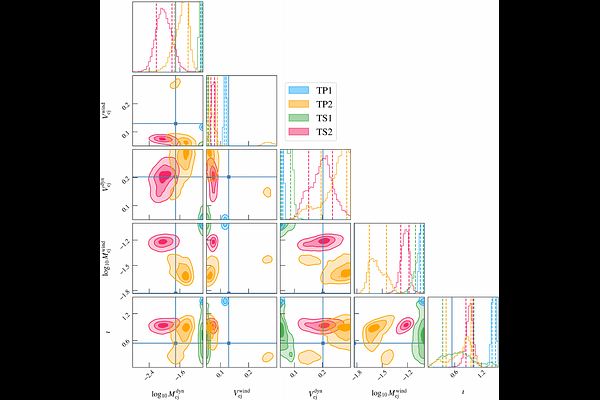Inferring neutron star merger ejecta morphologies with kilonovae

Inferring neutron star merger ejecta morphologies with kilonovae
Brendan L. King, Soumi De, Oleg Korobkin, Michael W. Coughlin, Peter T. H. Pang
AbstractIn this study we incorporate a new grid of kilonova simulations produced by the Monte Carlo radiative transfer code SuperNu in an inference pipeline for astrophysical transients, and evaluate their performance. These simulations contain four different two-component ejecta morphology classes. We analyze follow-up observational strategies by Vera Rubin Observatory in optical, and James Webb Space Telescope (JWST) in mid-infrared (MIR). Our analysis suggests that, within these strategies, it is possible to discriminate between different morphologies only when late-time JWST observations in MIR are available. We conclude that follow-ups by the new Vera Rubin Observatory alone are not sufficient to determine ejecta morphology. Additionally, we make comparisons between surrogate models based on radiative transfer simulation grids by SuperNu and POSSIS, by analyzing the historic kilonova AT2017gfo that accompanied the gravitational wave event GW170817. We show that both SuperNu and POSSIS models provide similar fits to photometric observations. Our results show a slight preference for SuperNu models, since the wind ejecta parameters recovered with these models are in better agreement with expectations from numerical simulations.